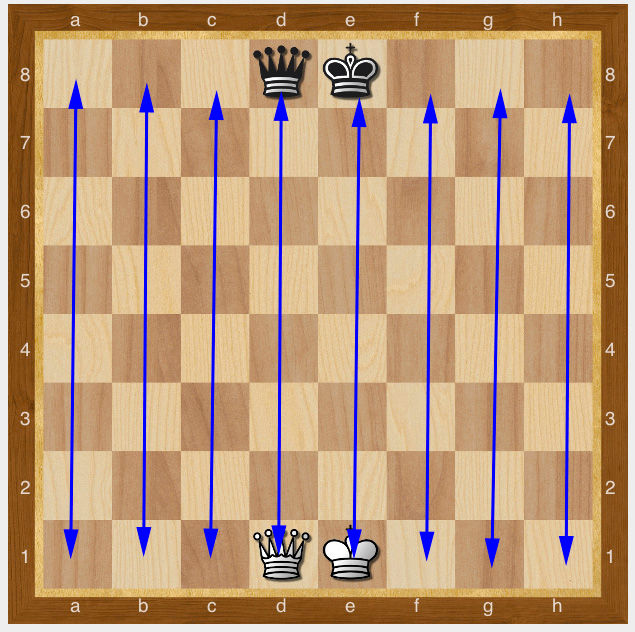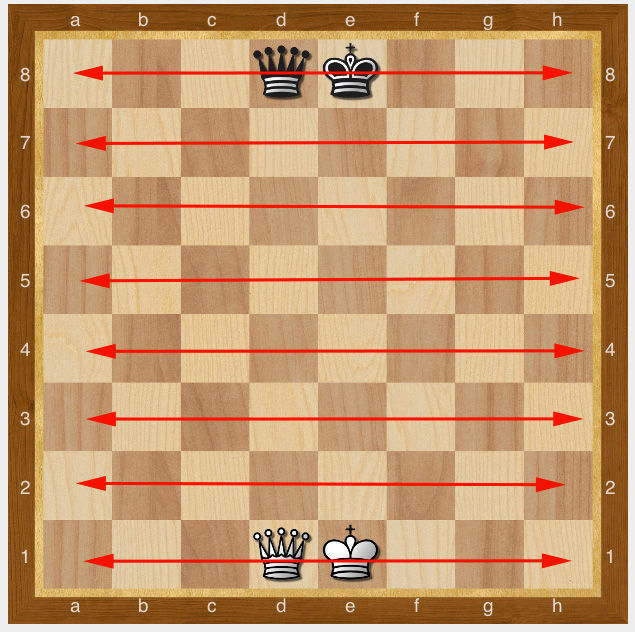Have a seat at the first board
- Robert Ek
- Nov 5, 2017
- 4 min read
Hey everyone, welcome to the LCES First Board Blog. On this blog we're going to cover some of the chess concepts that we discuss in the classroom on Fridays. Through these blog posts - you can stay up to speed with what we're covering and follow along at home if you're interested.
On our first day of club I asked several kids who already knew how to play chess. Several kids smiled and told me they knew exactly what they were doing and I chuckled as they promptly told their opponent across the board that they have to capture pieces by hopping over each other and proceeded to play the most bizarre game of checkers I've ever seen.
It makes perfect sense though. Two people sit over a board with 64 squares, half light half dark, and capture pieces. It made me realize that growing up that's where I thought the action was too, sitting down with a chess set and smashing the opponent's armies to bits. It wasn't until I was much older that I realized the game was not a war of attrition at all, but a game that hinges on control (bolded and underlined here for emphasis). Controlling space, controlling pacing, making the other player choose from only a set of bad options; as I said, control.
The way we win a chess game even hinges on control. In checkers, we win when we capture all the pieces. In chess, we can never actually capture the King, we can only corner the King, trap it like a fugitive with nowhere left to run. The game is a lot easier if I have captured more of my opponents pieces; but I don't have to capture every piece to win.
As we look at the basic rules of chess, I hope you keep this theme of "control" in the back of your mind as we build our chess playing toolkit.
Before we get to better know our armies we need to know the battlefield. So let's look at the board.
The Board

The chessboard has has 64 squares. 32 dark squares and 32 light squares. When we set up the board, the square furthest to the right should always be a light square. "Light Right" is an easy way to remember how the board should look when you are setting up a game.
In this diagram, it is a little easier to know if you're set up correctly because it has letters ascending from lift to right along the bottom of the board. Boards with the coordinates written on the sides are sometimes called "learner's boards" and I strongly recommend picking one up if you are just starting out. The boards LCES play on have the coordinates on them as well.
Another feature of the board that makes chess different from other games is that each square has a name. "Algebraic Notation" can be very intimidating for new-comers, so I like to say that each square on the board has a "mailing address". If you want to get around anywhere in a new city you need to know how to find an address. The chess board isn't any different.
Your typical address or notation reads like this:
(PIECE + FILE + RANK)
We will talk about pieces last. First, let's discuss what a FILE is.
FILES

FILES are the vertical columns on a chessboard. All FILES are given a letter starting with "a" and ending with "h". We use lower case letters when talking about files because we want to save the capital letters when referencing pieces.
Files are always read from White's point of view. in the diagram above, we see the files running from a to h from our left over to our right. If we flipped the board from Black's perspective, we're reading the board backwards, from h to a.
However, the pieces line up on the same files to start the game. Kings always begin play on the "e" file (to White's right or Black's left) and the Queen always starts play on the "d" file (White's left or Black's right).
Using the files we can see that the board is split in two even halves. Files a to d are the "Queenside" of the board. Files e to h are the "Kingside" of the board.
Now let's talk ranks.
RANKS

Ranks are easy to remember. Rank starts with "R", just like "ROWS". Ranks run across the chessboard like rungs of a ladder. Ranks are always numbered and run from 1 to 8. Again, like Files, Ranks are read from White's point of view in ascending order from 1 to 8. Black starts on the 8th rank and reads the board from 8 to 1.
White's pieces always start on Ranks 1 and 2. Black always starts its pieces on ranks 8 and 7.
PUTTING IT TOGETHER

After the first two moves of a game we see that White and Black are showing some traditional looks.
White plays first moving the King's pawn to the middle of the board. When we write the move down we do not need to put in a P for pawn. There are so many pawns on the board it can be difficult to identify them each individually. When scoring a game we solve this problem, each pawn's name matches the file they are sitting on. So, King's pawn starts the game on the "d-file" ... and moves up to the 4th rank. We write this down in our scorebook:
"d4"
Now it is Black's turn to respond. Black answers with the King's Knight, moving it off its home on g file and onto the 6th rank of the f file. A solid start allowing Black to immediately attack the lone pawn with delusions of grandeur in the middle of the board. This response from Black is called "Alekhine's Defense".
Because the letter "K" is already taken (can't confuse the Knight with the King - that would be bad.) we have to come up with a different letter to note that we're moving the Knight. In this case, we will use the letter "N". So, we put a dash after white's move
"d4 - Nf6"
And the game goes on! We can talk about how to score other moves later - but right now we now know how the chess board is laid out and how to identify each square. Next time, we'll start talking about the pieces themselves.




























Comments